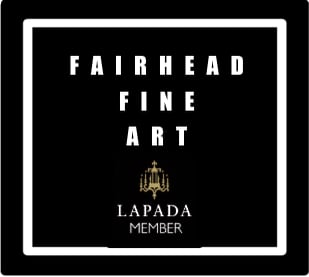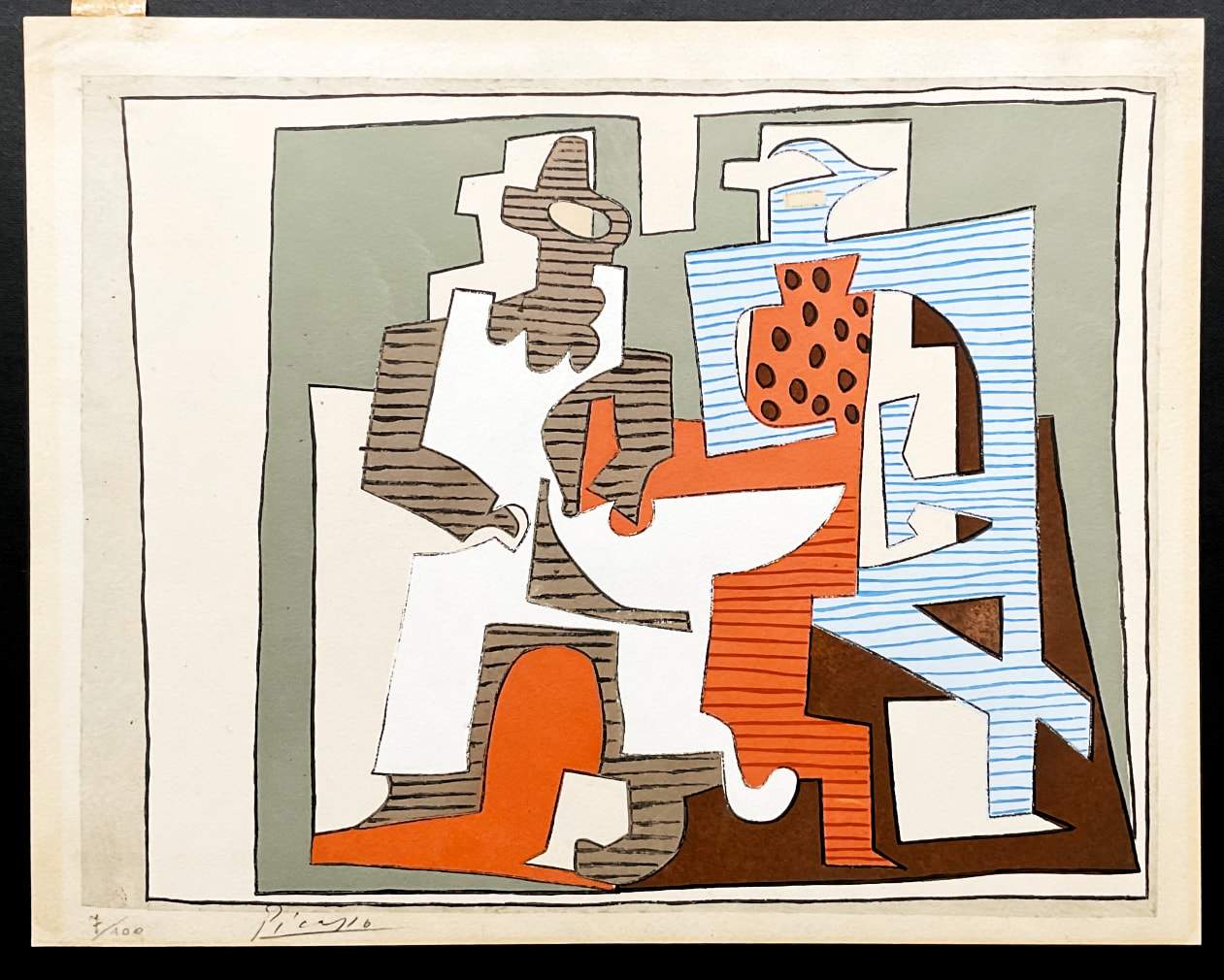after Pablo Picasso - Composition after Pierrot et Arlequin
£ 0.00
Pochoir printed in colours, Juan-le-Pins, Summer 1920, signed by the artist in pencil.
Published by: Galerie Rosenberg, Paris, Paris, France
Size: Plate size: Sheet 291 x 235 mm.
Edition: 100
Note: In Paris in the 1920s Picasso and his wife Olga Koklova were neighbours of the Rosenbergs (Leonce & Paul), who were both art dealers. Rosenberg would become Picasso's most important dealer and had first choice options on his pictures. In 1919 Rosenberg had opened an exhibition of Picasso's watercolours and drawings relating to his stage designs for Diaghilev's production of Le Tricorne. Very little is known about the edition although the pochoirs seem to relate to Picasso's set and costume designs for Parade. It was probably after this exhibition that Paul Rosenberg decided to edit a series of stencils showing the costumes and sets for this ballet, written by Jean Cocteau, with music by Erik Satie, featuring Picasso's cubist costumes and an imposing curtain representing saltimbanques.
From the portfolio "Pablo Picasso. Dix Pochoirs". Published by Galerie Rosenberg, Paris, 1920. A Pochoir is made by a stencilling technique and, consequently, these are not original prints and properly catalogued as “after Pablo Picasso” although they are signed and numbered by the artist.
Pierrot is a stock character of Pantomine and play whose organs are in the late 17th century. Italian troupe of players performing in Paris and known as the Comedie-Italienne ; the name is a diminutive of Pierre (Peter), via the suffix -ot. His character in contemporary popular culture—in poetry, fiction, and the visual arts, as well as works for the stage, screen, and concert hall—is that of the sad clown, pining for love of Coiumbine , who usually breaks his heart and leaves him for Harlequin. Performing unmasked, with a whitened https://p1.liveauctioneers.com/957/256252/133253155_2_x.jpg?quality=80&version=1659029015 face, he wears a loose white blouse with large buttons and wide white pantaloons. Sometimes he appears with a frilled collaret and a hat, usually with a close-fitting crown and wide round brim, more rarely with a conical shape like a dunce's cap.
Harlequin was a comic servant characters from the Italian Commedia del arte. The Harlequin is characterized by his chequered costume. His role is that of a light-hearted, nimble, and astute servant , often acting to thwart the plans of his master, and pursuing his own love interest, Columbina, with wit and resourcefulness, often competing with the sterner and melancholic Pierrot. He later develops into a prototype of the romantic hero. Harlequin inherits his physical agility and his trickster qualities, as well as his name, from a mischievous “devil” character in medieval passion plays.
Picasso when a young man was fascinated by the circus and many of his early works depict these two figures. They are frequently depicted in his cubist works as in this instance.References: FitzGerald, Michael C. & Julia May Boddewyn. 2006. Picasso and American Art (Whitney Museum of American Art, New York, September 28, 2006 - January 28, 2007; San Francisco Museum of Modern Art, February 25 - May 28, 2007; Walker Art Center, Minneapolis, June 17 - September 9, 2007). New Haven, CT: Yale University Press. (94p)
Mallen, Enrique, ed. 1997-2022. Online Picasso Project. Sam Houston State University. (20:130)
Public Collections: MOMA, New York
Condition: Sheet slightly irregularly trimmed (as is often the case with this series) Some staining on the margins. Marks and abrasions verso due to previous taping, Otherwise in good condition with fresh colours.
Category Pablo Picasso


